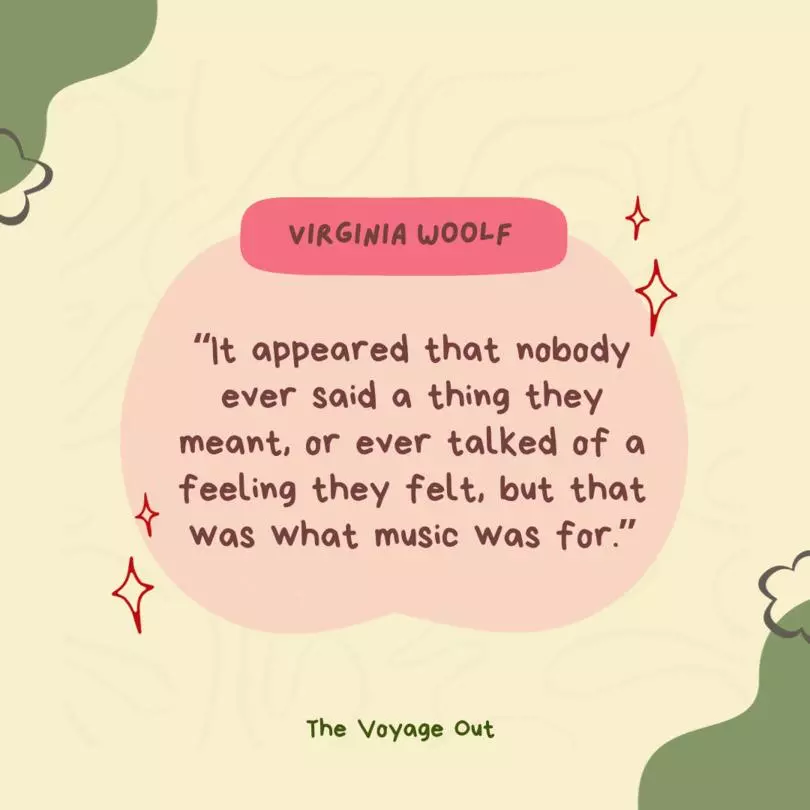Embarking on the Journey of Self-Discovery – A Review of “The Voyage Out” by Virginia Woolf
Navigating the Seas of Inner Turmoil – A Deep Dive into Virginia Woolf’s “The Voyage Out”
In the realm of literature that explores the human psyche, Virginia Woolf’s debut novel, “The Voyage Out,” stands as a captivating exploration of self-discovery, societal conventions, and the complex interplay of emotions. With prose that ebbs and flows like the tides, Woolf crafts a narrative that takes readers on a voyage not only across oceans but also into the depths of the characters’ inner turmoil.
Setting Sail into Complexity: The World of “The Voyage Out”
Imagine a voyage by ship, where passengers are not just crossing the sea but embarking on a journey of transformation. “The Voyage Out” introduces us to Rachel Vinrace, a young woman setting out on a sea voyage with her aunt and uncle. As the ship navigates the physical waters, the characters’ lives are also set adrift, revealing their desires, fears, and aspirations.
The setting of the voyage becomes a microcosm of life itself, a journey that mirrors the unpredictable nature of human emotions and relationships. Woolf’s narrative captures the essence of the sea – at times tranquil and serene, at times tumultuous and chaotic – as a metaphor for the characters’ internal struggles.

A Tapestry of Characters: Individuals in the Spotlight
The heart of “The Voyage Out” lies within its characters, each a unique thread in the narrative’s intricate tapestry. Rachel Vinrace, the novel’s central character, evolves from a sheltered young woman into a complex individual whose journey of self-discovery forms the novel’s core. As she grapples with the complexities of identity, love, and societal expectations, readers witness her transformation from innocence to self-awareness.
The ensemble of characters that surround Rachel provides a diverse spectrum of perspectives on life, love, and human nature. From the enigmatic Helen Ambrose to the introspective Terence Hewet, Woolf’s portrayal of these characters reveals the rich complexity of human interactions, complete with the subtleties of attraction, friendship, and misunderstanding.
Themes of Self-Discovery and Conformity: Insights Explored
“Embark on the voyage within,” Woolf seems to whisper, as she delves into themes that resonate deeply with the human experience. The theme of self-discovery is central to the novel, as Rachel’s journey becomes a metaphor for the broader quest for understanding one’s own desires, aspirations, and place in the world. Woolf’s exploration of Rachel’s evolving consciousness encourages readers to reflect on their own paths of self-awareness and growth.
Conformity is another prominent theme that surfaces throughout the narrative. The characters’ interactions with societal norms and expectations highlight the tension between individuality and conformity. Woolf’s portrayal of Helen Ambrose’s unconventional attitudes serves as a critique of the constraints placed upon women in the early 20th century, inviting readers to question the limitations imposed by societal conventions.
A Delicate Dance of Words: Woolf’s Writing Style in “The Voyage Out”
Virginia Woolf’s writing style is a symphony of introspection and lyrical prose. Her narrative ebbs and flows like the tide, capturing the rhythms of thought and emotion. Woolf’s language is both poetic and precise, inviting readers to inhabit the minds of the characters and experience their inner worlds.
The novel’s structure reflects the complexities of human consciousness, as Woolf weaves together the characters’ thoughts and interactions. Her prose often drifts between the external world and the characters’ inner monologues, creating an immersive reading experience that mirrors the fluctuations of human thought.
Relevance in a Changing World: Today’s Reflections
While “The Voyage Out” is anchored in its historical context, its themes of self-discovery and the struggle against societal conventions remain relevant in the modern world. In an era marked by rapid change, shifting social norms, and the ongoing pursuit of personal fulfillment, Woolf’s exploration of identity and the complexities of human relationships continues to resonate.
The tension between individuality and conformity remains a pertinent theme, as individuals navigate the pressures of societal expectations while striving to honor their authentic selves. Woolf’s portrayal of characters who challenge convention encourages readers to reflect on their own choices, values, and the degree to which they choose to conform or carve their own paths.

Final Thoughts on “The Voyage Out”: Navigating the Seas of the Soul
Virginia Woolf’s “The Voyage Out” is a literary odyssey that invites readers to navigate the seas of the soul, embarking on a journey of self-discovery alongside the characters. Through her lyrical prose and introspective narrative, Woolf captures the essence of human emotion, the complexities of identity, and the delicate dance of relationships.
As readers journey through Rachel Vinrace’s awakening, they are reminded of the power of introspection, the beauty of embracing one’s true self, and the transformative nature of personal growth. “The Voyage Out” stands as a testament to the richness of human experience, inviting readers to set sail on their own voyages of self-discovery, navigate the tumultuous waters of emotion, and find solace in the interconnectedness of all journeys.